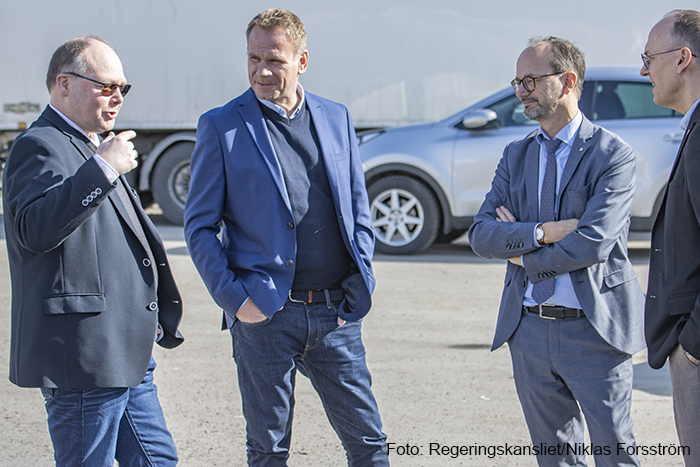Electrification of the heavy vehicle fleet is an important part of the goal of reducing the climate impact of the transport sector. However, there is still a lot to do in terms of, for example, charging infrastructure and battery capacity before electricity is really to be seen as an alternative. Through its subsidiary Tommy Nordbergh Åkeri, Tempcon has several electric vehicles in operation and the most recent was put into service in Stockholm after the turn of the year in collaboration with PostNord. At the end of March, Minister of Infrastructure Tomas Eneroth paid a visit to Tommy Nordbergh Åkeri at Tempcon Stockholm to take part in the experience of driving a Scania BEV – the first series-produced electric truck from Scania.
With the electrification of heavy transport also comes some challenges, not least in the form of business models and arrangements in addition to the above. To learn more about these challenges and opportunities, Minister of Infrastructure Tomas Eneroth visited Tommy Nordbergh Åkeri. Among other things, the government has set up an electrification commission to speed up the work of electrifying the heavy road transport and the transport sector as a whole, and the Minister was very pleased with the initiatives that are now being taken in several parts of the industry.
It was in the spring of 2021 that Tommy Nordbergh Åkeri decided to invest in another electric vehicle. This time an electric Scania BEV as part of a collaboration with PostNord. The purpose of the investment has been to test battery-powered distribution in a large city with cooling and heating units on behalf of the customer Apotek Hjärtat. The ambition has been for the car to drive two shifts for Apotek Hjärtat and another shift with own packages. Through the collaboration, both parties will also gain valuable knowledge about electric operation of heavier vehicles in a distribution environment.
During the winter, careful preparatory work has been done in the form of a number of simulations to calculate energy consumption for different types of routes. In connection with this, the need for a fast charger in connection with the car’s location at PostNord’s terminal in Årsta was also determined, and at the end of January, one of 150 kWh was installed. After that, the first tests began and on February 21, the truck was put into sharp operation.
– The car is currently driven in two shifts, a night shift with 9 stops on a distance of 100 km, and a day shift which also means 9 stops but within a distance of 40 km. The average consumption has been about 177 kWh per 100 km during February and March. Now in the spring, the third shift will be added, says Stefan Nordbergh, operations manager at Tommy Nordbergh Åkeri.
According to the company, the experiences so far are generally positive. The drivers are satisfied with the work environment in terms of both comfort and driving characteristics. The margins in energy consumption are also good, which provides security for drivers. The haulier has also seen that static and predictable flows work best, together with its own charger that ensures optimal charging.
– At the same time, the investment is significant. The cost is between 2.3 and 2.5 times higher than for the corresponding diesel car, which means that the car should go in several shifts to distribute the investment. It also means that the cost to the customer will be higher if we are not efficient in that work, it requires good cooperation, understanding and courage from all of us who are involved, says Jonas Råstedt, CEO at Tommy Nordbergh Åkeri.
